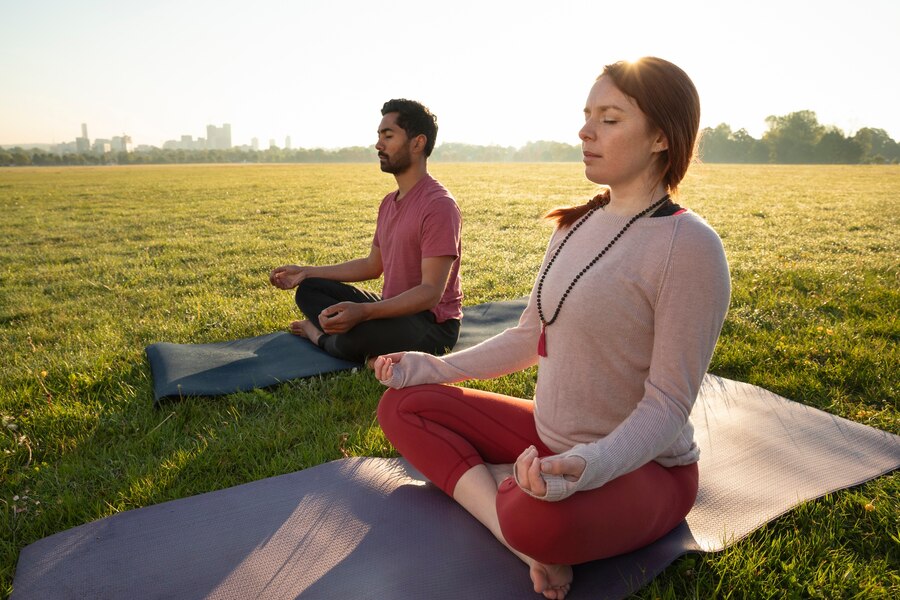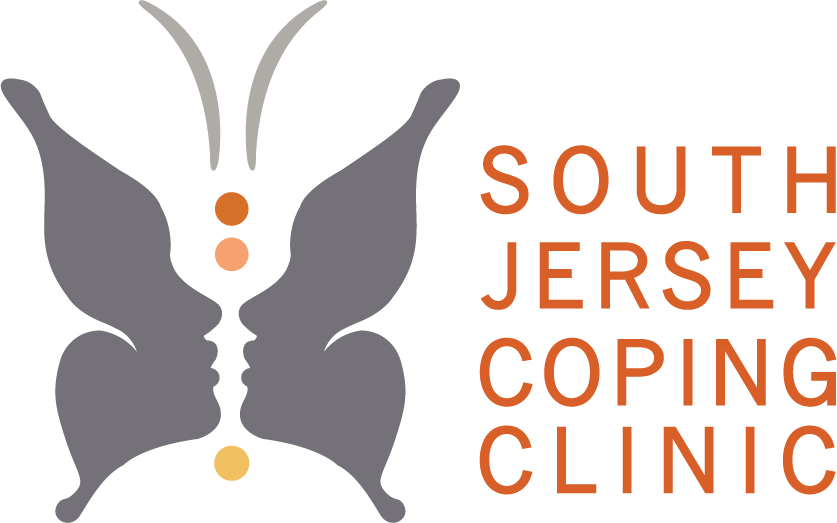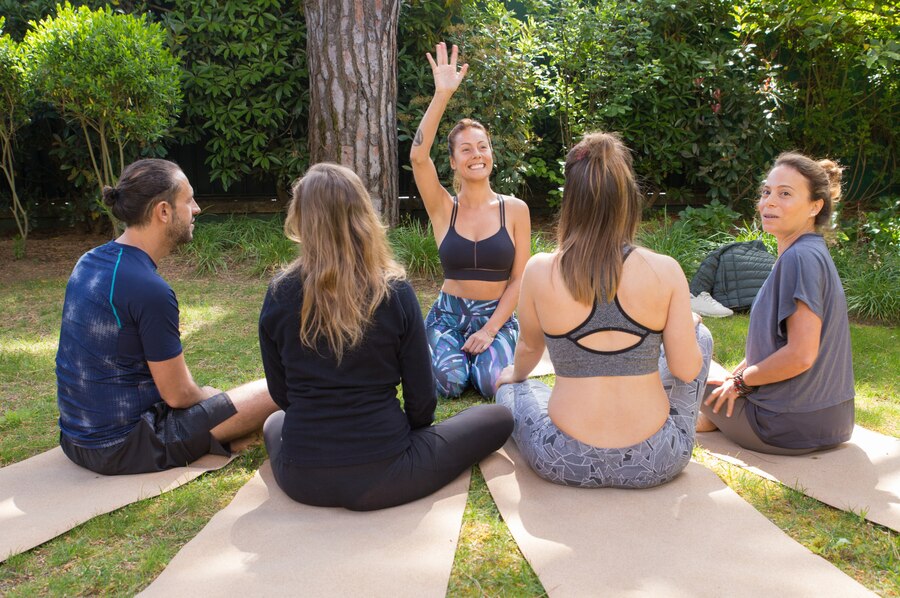In the hustle and bustle of modern life, finding a sense of balance can often feel like chasing an elusive dream. Our physical health, emotional well-being, and mental clarity can easily become tangled in the complexities of daily stressors, leaving us feeling overwhelmed and disconnected from ourselves. However, amidst the chaos, there exists a powerful duo that offers a path towards harmony: yoga and therapy.
In this blog post, we delve into the profound intersection of physical and emotional well-being, exploring how the practice of yoga and the principles of therapy intertwine to cultivate a holistic approach to wellness.
From ancient spiritual traditions to modern therapeutic techniques, the integration of these disciplines offers a roadmap for reconnecting with ourselves, fostering self-awareness, and nurturing a balanced existence.
Join us on this journey as we uncover the transformative potential of uniting body and mind in the pursuit of true equilibrium.
Understanding the Mind-Body Connection
At the core of the mind-body connection lies the ancient wisdom of yoga, originating in India thousands of years ago. Rooted in the Sanskrit concept of “yoga” meaning union, this holistic tradition seeks to harmonize physical, mental, and spiritual dimensions. From dynamic asanas to rhythmic pranayama, yoga offers a multifaceted approach to well-being. Modern science, incorporating neuroscience and psychology, further illuminates this connection. Emerging research reveals the profound impact of mind-body practices like yoga on the brain, nervous system, and emotional regulation, highlighting intricate pathways where physical and emotional health intersect.
How Asanas and Breathwork Impact Physical and Emotional Health
Asanas, or yoga postures, serve as the cornerstone of physical practice, offering a dynamic means of engaging with the body and cultivating strength, flexibility, and balance. Beyond their physical benefits, however, asanas also exert a profound influence on the mind and emotions, triggering the release of neurotransmitters and hormones that promote relaxation, stress reduction, and overall well-being.
Similarly, breathwork, or pranayama, plays a pivotal role in the science of yoga, serving as a bridge between the conscious and unconscious realms of the mind. Through deliberate manipulation of the breath, practitioners can regulate the autonomic nervous system, inducing states of calm, clarity, and focus. Moreover, pranayama practices have been shown to enhance respiratory function, cardiovascular health, and immune function, highlighting the far-reaching effects of conscious breathing on physical and emotional health.
Therapeutic Modalities: Unpacking the Tools and Techniques of Psychological Healing
In tandem with the ancient wisdom of yoga, modern psychology offers a rich array of therapeutic modalities designed to promote psychological healing and personal growth. From cognitive-behavioral therapy (CBT) to dialectical behavior therapy (DBT), these evidence-based approaches provide structured frameworks for exploring and transforming the underlying patterns and beliefs that shape our thoughts, feelings, and behaviors.
Moreover, therapy offers a safe and supportive space for processing emotions, navigating life transitions, and healing from past traumas. Through techniques such as talk therapy, mindfulness-based interventions, and somatic experiencing, therapists empower clients to cultivate greater self-awareness, resilience, and authenticity, fostering a deeper sense of connection with themselves and others.
Bridging the Gap: Integrating Yoga Practices with Therapeutic Approaches
While yoga and therapy may seem distinct in their approaches, they share a common goal: to promote healing and well-being on physical, emotional, and spiritual levels. By bridging the gap between these modalities, practitioners can harness the synergistic power of movement, mindfulness, and introspection to facilitate deeper levels of transformation and growth.
One way to integrate yoga practices with therapeutic approaches is through trauma-informed yoga, a specialized form of yoga that emphasizes safety, choice, and empowerment for survivors of trauma. By incorporating trauma-sensitive modifications and mindful awareness techniques, trauma-informed yoga offers a gentle yet powerful means of healing the wounds of the past and reclaiming a sense of wholeness and resilience in the present moment.
Healing Trauma: How Yoga and Therapy Can Work Together to Address Emotional Wounds
Trauma, whether stemming from childhood experiences, interpersonal relationships, or societal injustices, can cast a long shadow over our lives, impacting our thoughts, emotions, and behaviors in profound and often unconscious ways. Through the integrated approach of yoga and therapy, individuals can embark on a journey of healing and liberation, reclaiming their inner strength and resilience in the face of adversity.
Yoga offers a somatic pathway for processing and releasing stored trauma from the body, allowing individuals to safely explore and express their emotions through movement, breath, and mindfulness. Meanwhile, therapy provides a supportive container for exploring the underlying roots of trauma, uncovering patterns of belief and behavior that may be perpetuating cycles of suffering and self-sabotage. Together, these practices empower survivors to reclaim ownership of their bodies, rewrite the narrative of their lives, and transform pain into possibility.
Cultivating Mindfulness: Harnessing Yoga and Therapy for Present-Moment Awareness
At the core of both yoga and therapy lies the practice of mindfulness, a profound approach to experiencing life with presence and acceptance. Through mindfulness, individuals develop heightened self-awareness and emotional resilience, fostering a deeper connection with themselves and the world around them.
Yoga provides a rich array of mindfulness practices, including mindful movement, breathwork, and meditation. By anchoring attention in the sensations of the body and the rhythm of the breath, yoga facilitates a quieting of the mind, allowing healing and transformation to unfold effortlessly. Similarly, therapy offers techniques like mindfulness-based stress reduction and dialectical behavior therapy, empowering individuals to bring mindful awareness to thoughts, emotions, and behaviors, fostering greater clarity, insight, and compassion in daily life interactions and relationships.
 Navigating Stress and Anxiety: Practical Strategies from Yoga and Therapy
Navigating Stress and Anxiety: Practical Strategies from Yoga and Therapy
In today’s fast-paced world, stress and anxiety have become pervasive challenges affecting our physical health and mental well-being. However, through the holistic approach of yoga and therapy, individuals can cultivate resilience and grace in navigating these obstacles. Yoga offers a diverse set of practices, including gentle asanas, pranayama, and meditation, to tune into the body’s wisdom and restore balance to the nervous system, fostering calm amidst chaos. Concurrently, therapy equips individuals with practical strategies like cognitive restructuring and relaxation training, empowering them to reframe thought patterns and manage stressors effectively, ultimately reclaiming agency over their lives.
Embodied Wisdom: Tapping into the Body’s Intelligence for Emotional Resilience
In a culture that often prioritizes intellect over intuition and rationality over emotion, we may overlook the profound wisdom that resides within our bodies. Yet, through the integrated approach of yoga and therapy, individuals can learn to reconnect with the innate intelligence of the body, harnessing its healing power to navigate life’s challenges with greater ease and resilience.
Yoga invites us to listen to the whispers of the body, to honor its messages and respond with compassion and curiosity. By tuning into the sensations of tension, discomfort, or pleasure, we can gain insight into our emotional landscape, uncovering buried emotions, unmet needs, and untapped resources for healing and growth.
Therapy provides a supportive container for exploring the body’s wisdom in depth, helping clients unravel the somatic patterns and imprints that may be holding them back from living fully and authentically. Through techniques such as body-centered psychotherapy and sensorimotor psychotherapy, therapists guide clients in befriending their bodies, integrating fragmented parts of the self, and reclaiming a sense of wholeness and vitality.
From Self-Care to Self-Discovery: Using Yoga and Therapy for Personal Growth
Self-care is more than just bubble baths and massages; it’s a radical act of self-love and self-compassion that nourishes our body, mind, and soul. By integrating yoga and therapy into our self-care routines, we can cultivate greater self-awareness, self-acceptance, and self-empowerment, fostering a deeper sense of connection and authenticity in our lives.
Yoga offers a holistic approach to self-care, encompassing practices for nurturing the physical, emotional, and spiritual dimensions of our being. From mindful movement and breathwork to meditation and self-reflection, yoga invites us to slow down, tune in, and listen to the whispers of our soul, honoring our unique needs and honoring our innate worthiness.
Therapy provides a supportive space for exploring the underlying roots of self-care challenges, such as perfectionism, people-pleasing, and low self-esteem. Through techniques such as inner child work, self-compassion exercises, and boundary setting, therapists help clients develop healthier relationship with themselves and others, fostering a deeper sense of self-worth and agency in their lives.
Building a Holistic Wellness Routine: Incorporating Yoga and Therapy into Your Daily Life
Creating a holistic wellness routine is like weaving a tapestry of self-care practices that nourish and support us on all levels – physical, emotional, and spiritual. By incorporating yoga and therapy into our daily lives, we can cultivate greater resilience, vitality, and joy, fostering a deep sense of alignment and purpose in our journey toward wholeness.
Start by carving out dedicated time for yoga and therapy in your schedule, whether it’s a daily morning practice or a weekly therapy session. Experiment with different styles and approaches to find what resonates with you, whether it’s gentle hatha yoga, dynamic vinyasa flow, or trauma-informed therapy.
As we come to the end of this exploration into the powerful fusion of yoga and therapy, it’s clear that these modalities offer much more than just physical exercise or talk-based healing. They provide a holistic approach to wellness, addressing the interconnectedness of our physical, emotional, and spiritual selves. By integrating yoga and therapy into our lives, we have the opportunity to embark on a journey of self-discovery, healing, and growth, finding balance amidst the chaos of modern life.
Now that you’ve gained insights into the transformative potential of integrating yoga and therapy for holistic well-being, consider taking the next step in your journey toward healing and growth. If you’re in the Marlton, NJ area, South Jersey Coping Clinic stands ready to support you on your path to wellness.
South Jersey Coping Clinic is a trusted mental health private practice, staffed by a team of licensed professionals dedicated to serving individuals, couples, families, and groups. From anxiety and depression to family challenges and identity issues, their therapists offer compassionate and effective treatment for a wide range of mental health concerns.
If you or a loved one could benefit from therapy, reach out to South Jersey Coping Clinic today. Whether you’re seeking support for yourself, your child, or your family, their team is here to help. Contact them at info@southjerseycopingclinic.com or call (267) 225-1972 to schedule an appointment and take the first step toward a brighter, more balanced future.







